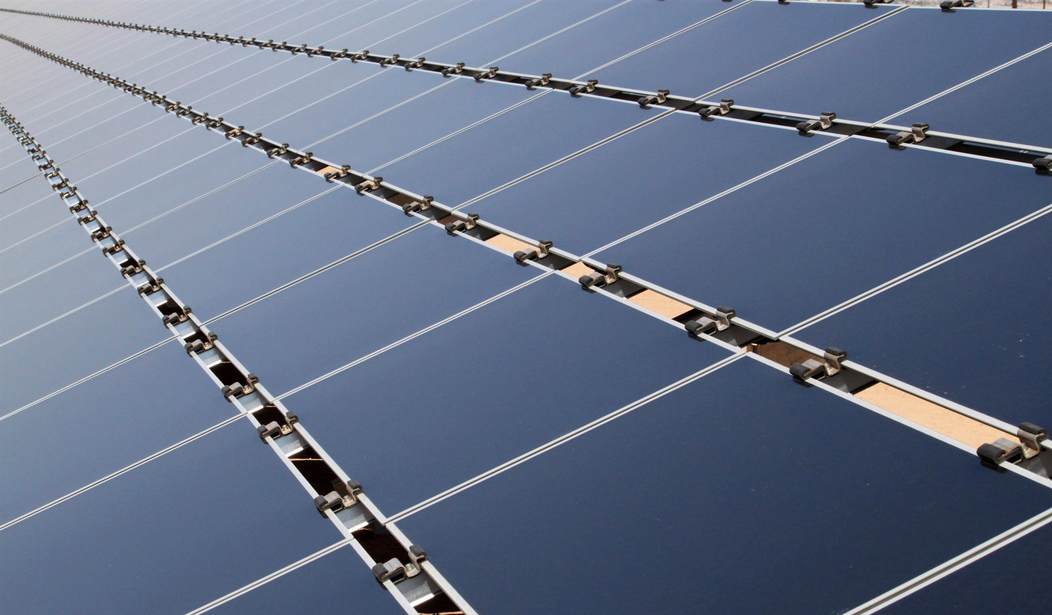Pause for a moment and think about your household budget. Imagine discovering a recurring, uncapped expense, initially sold as modest, that threatens to consume an ever-larger share of your limited budget, with the potential to bankrupt you.
This is precisely the scenario America faces with new, expanded green energy tax credits that were signed into law in 2022 as part of the far left’s Inflation Reduction Act (IRA). The bill expanded existing green tax credits for electric vehicles (EV) and other intermittent and unreliable energy projects, such as wind turbines, solar panels, and EV charging stations. It also added funding mechanisms giving away tens of billions in taxpayer dollars to political pet projects. The House of Representatives recently took a courageous step to begin plugging this drain by rolling back some of the most egregious giveaways. The Senate, which has drafted—but not passed—its own version, must now demonstrate similar fiscal responsibility and an America First commitment by preserving these crucial reforms. Our nation's economic health and energy future depend on it.
The stakes are immense. We are not merely debating minor budget line items; we are deciding whether to continue down a path of crippling debt for energy schemes that fall short, or to pivot towards policies that foster abundance and affordability for all Americans.
The initial sales pitch for the IRA’s energy tax credits grossly understated their true cost. Original estimates have been dwarfed by current projections, which now suggest these subsidies could cost taxpayers anywhere from $936 billion to a staggering $1.97 trillion over the next decade, and potentially up to $4.7 trillion by 2050. This isn't a rounding error; it's a fiscal avalanche threatening to bury future generations under a mountain of debt. Pouring endless taxpayer dollars into politically favored technologies without a clear, cost-effective return is not a strategy for enhancing economic growth; it’s a recipe for economic decline.
Recommended
These colossal sums are largely directed towards unreliable solar and wind projects. While proponents laud these as the future, they ignore energy reality. Solar and wind are intermittent; they only produce power when the sun shines or the wind blows. This necessitates expensive backup systems, often reliant on the very fossil fuels these subsidies aim to displace, or massive investment in battery storage that itself carries significant resource and disposal challenges.
Furthermore, the narrative of "clean" energy often glosses over the significant material requirements. Manufacturing solar panels and wind turbines involves mining critical minerals at scale, resource-intensive industrial processes, and eventual disposal issues. Labeling these energy resources as "renewable" is misleading when the inputs are finite and the processes have their own environmental footprints. So many Americans respond enthusiastically to calls to conserve the blessings of our natural environment—as do I. The best way to encourage that is to provide them with the affordable, reliable, and scalable energy necessary for a prosperous society, not by chasing arbitrary targets with government-favored technologies.
These subsidies are nothing more than the government picking winners and losers, distorting energy markets, and stifling the competition that drives genuine innovation. Instead of fostering an environment where all energy sources can compete on their merits to deliver the most value, we are channeling vast sums into specific technologies that often cannot stand on their own.
This approach hinders the development of truly cost-effective solutions and has been a massive benefit to foreign firms, siphoning American tax dollars overseas to the benefit of our greatest adversary, China, which controls a large portion of the supply chain. What we need is a policy framework where producers can responsibly develop, and consumers can choose their forms of energy. This is the path to abundant, affordable power that underpins prosperity for all.
Some will argue that the House-passed rollbacks go "too far, too fast" and are "bad for industry." They may even argue that a milder proposal than the House’s strikes the best balance. In reality, the current trajectory of the IRA’s energy spending is fiscally reckless and economically unsound; a bold approach is needed. The House reforms aren’t an attack on energy development; they’re a necessary course correction towards fiscal sanity and market-based solutions.
An industry perpetually dependent on government handouts for political pet projects is not a healthy industry. True strength comes from delivering value in a competitive marketplace. We should champion policies that empower American ingenuity to provide the energy we need to flourish, not mandate reliance on inherently limited and expensive options.
The path to a prosperous American future is paved with abundant, affordable, and reliable energy. The IRA's current subsidy scheme, however well-intentioned some may claim it to be, actively undermines this goal by misallocating trillions of dollars towards inefficient and unreliable sources.
Congress now has a clear choice: save a fiscally disastrous policy that has been rejected by the American people or embrace sensible reforms to advance affordable abundance across America. I sincerely hope Congress will choose the latter.
Ambassador Carla Sands serves as Vice Chair for Energy & Environment at the America First Policy Institute. She served as the United States Ambassador to the Kingdom of Denmark from 2017 to 2021.
























Join the conversation as a VIP Member